Overlooked (But Very Notable) Deaths In 2020 (Part 1)

We don't have to tell you that it's been a stewing, bloated turd of a year. 2020 has robbed us of our overall global health, our belief in our political system (granted, there wasn't a whole lot left), and if that wasn't enough, it twisted the knife deeper and stole some of our biggest icons. Kobe Bryant crashed in a helicopter, Alex Trebek got taken down by cancer, and Ruth Bader Ginsburg traded in her gavel for a halo. 2020 can seriously go shit in its hat.
But there were other people that left our realm this year. People who changed the world in their own peculiar little ways, and the news didn't really pay them much attention because of TRUMPWILDFIRECORONABONER. So let's sit back and take a breath, remember that the world does not have to become a raging comment section, and all take solace in the fact that we are still alive, while these incredibly influential people are not. On to the next year!
January 18 - A Supermarket Pioneer

Who?
Frieda Caplan, produce supplier.
How?
Her Story:
There was a time not long ago that your neighborhood grocery stores used to be pretty boring. If you were on the hunt for things like habanero peppers, shiitake mushrooms, baby carrots, mangoes, kiwis, or sugar snap peas, you were sugar crap outta luck. Frieda Caplan ran a produce business that wasn't afraid to introduce new products into supermarkets, and she's universally credited as helping to change food for the American public.
Nicknamed the "Kiwi Queen," Caplan ignored the male-driven aspects of the produce world and crafted her own little niche. She knew grocery customers might be thrown off by new things they hadn't seen, so she added recipes to the packaging of these new items, as well as instructions on preparing them. Born in 1923 in Los Angeles, Caplan was the daughter of Russian immigrants. After college, she got married and was looking for some line of work that had flexible hours, so her husband's family took her on as a bookkeeper at a produce house. When her boss was away, she filled in as a cashier and began steering customers towards things they normally wouldn't buy. She got the bug and started her own business, with a goal towards supporting smaller, local farmers whose products normally wouldn't have competed with the big boys. She single-handedly brought kiwis to American markets, and it took a decade before they took off. Caplan was known as the woman who brought exotic fruits and vegetables to a public hungry for something new and even provided alien-like items to Star Trek. Without her, we'd all still be eating boiled potatoes and canned spinach.
January 18 - President Nixon's Triggerman
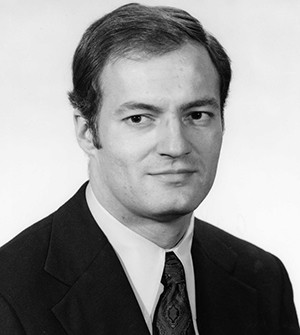
Who?
Egil Krogh, lawyer, and aide to President Nixon.
How?
Heart failure.
His Story:
President Richard Nixon, as you may or may not know, was a sleazy, shady bastard who tried to gain secrets on just about every person he knew. Of course, the most famous part of his legacy was the Watergate scandal, where he had cronies break into an office complex where the Democratic National Committee was located. But there was another break-in authorized by Nixon a year before, and Egil Krogh was instrumental in setting it up.
As a confidante to Nixon, Krogh and the clandestine White House group known as "the plumbers" worked to stop any leaking of classified information to the press. And boy was there a lot of it. In 1971, Krogh authorized a break-in to the office of the psychiatrist of the person leaking much of the Nixon dirt in the Pentagon Papers, Daniel Ellsberg. For his efforts, Krogh was the first person in the Nixon administration sentenced to jail. He ended up serving four and a half months, and would regret his actions, and would tour the country lecturing on ethics in his later years.
February 1 - The First Gay Federal Judge

Who?
Deborah Batts, judge for the U.S. District Court of New York.
How?
Complications from surgery.
Her Story:
Presidents and their appointment of judges is something that makes most people's genitals retract these days. But when Bill Clinton assigned Deborah Batts to a federal judge position in June 1994, he didn't know he was making history.
Batts was the first openly gay judge in the history of the federal judiciary court system. She didn't try to hide it, but she also didn't want to be known as the "gay judge." Her previous experience as a law professor and prosecutor made people take notice, but she didn't rest on her laurels once she presided over the Federal District Court in New York. She oversaw a program that helped convicts earn a reduction in their supervised released programs through a special rehabilitation process. Her last case would have been a real hoot if she hadn't died three days before it was to commence: it was going to be a case against infamous lawyer Michael Avenatti, with charges that he stole book deal money from adult actress Stormy Daniels. That would have been great for no other reason than to make Donald Trump uneasy about something.
February 19 - The Cure For Baldness
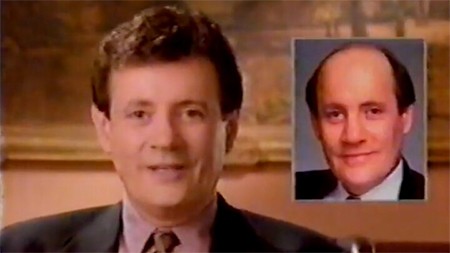
Who?
Sy Sperling, the founder of Hair Club for Men.
How?
Undisclosed, listed as a "lengthy illness."
His Story:
Infomercials ruled the landscape in the 1980s, and for a time, there was no bigger star than Sy Sperling, who hocked hairpieces for men. The technology wasn't quite there yet, as most of these wigs resembled deflated rats, but it was the genuine feeling that Sperling gave off that made him a fixture. You just sensed that he would take care of you, or at least the top of your head.
Sperling's trademark motto was that he wasn't just the Hair Club for Men president; he was "also a client." And indeed he was, starting his business in the '70s because he was tired of his male pattern baldness. He wanted to create a hairpiece that could withstand the rigors of daily life, including sexytime. His business did well and led to him taking to the television airwaves in 1982 to sell his product. They quickly received 10,000 calls in a single month. It turns out guys like having hair, and if they don't have it anymore, they'll take it from almost anywhere. He later focused his efforts away from just men, as women undergo hair loss as well -- Hair Club for Men would re-brand as the all-inclusive HairClub. He even helped out children who were losing their hair from cancer treatment. Rest in peace, Sy Sperling: many may only remember your face from insomnia half-dreams at three in the morning, but you accomplished so much more.
February 22 - The Inventor of the Quintessential '80s Jacket
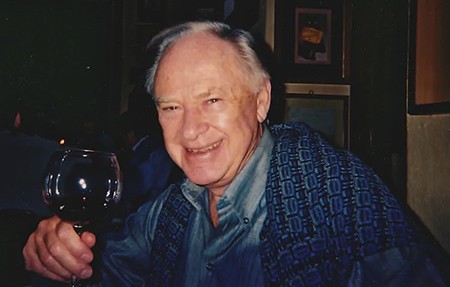
Who?
Herb Goldsmith, inventor of the Members Only jacket.
How?
His Story:
It was the jacket that would define the 1980s. In 1984 alone, the jacket brand brought in $200 million. It was Members Only, the clothing that promised, "When you put it on, something happens." And that something, though vague, turned out to be a trend of disavowing celebrity endorsements and putting their efforts into making PSAs about crack babies and using Hitler footage to make people take part in the 1988 presidential election. Behind those bizarre-yet-successful marketing decisions was founder Herb Goldsmith.
Goldsmith took over his dad's apparel business in the 1970s, morphing it into Members Only after seeing a jacket he fell in love with while overseas in Germany. He debuted the iconic jacket in the States in 1980, with the name and logo representing a kind of exclusivity that the money-hungry '80s public craved. Seriously, it's shocking that the jacket didn't come with a coke spoon in a hidden inner pocket. Famous people everywhere sported the Members Only look, and the brand received a massive shot in the arm from, of all places, the War on Drugs. Goldsmith committed a huge portion of the advertising budget to ads that spoke out about Reagan's campaign against drug abuse -- while making sure to sneak the Members Only name in at the end of the spots.
February 24 - NASA's Hidden Figure
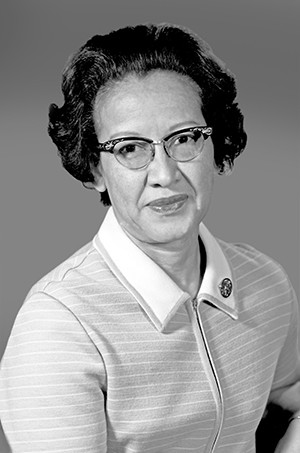
Who?
Katherine Johnson, NASA mathematician.
How?
Natural causes.
Her Story:
The early days of NASA were presumably white men marveling at jet fuel burning and then deciding to shoot it up into the sky. The idea was there, but it needed some finesse. Enter Katherine Johnson -- a mathematician working there who had been with the agency since 1953. She and other Black women were on a team centered in Virginia, who went through harsh bouts of racism and sexism in a white-male-dominated field.
Katherine Johnson hand-computed and calculated the flight path and trajectory of the first crewed space expeditions and even the mission that sent the first Americans to the moon. She was one of the subjects of the 2016 film Hidden Figures, based on the novel of the same name. In that book, John Glenn, the first American to orbit Earth, spoke of the special trust he had with Johnson, remarking that her personal calculations were part of his crucial pre-mission checklist. The author of Hidden Figures, Margot Lee Shetterly, spoke of the irony of that bond: "So the astronaut who became a hero looked to this Black woman in the still-segregated South at the time as one of the key parts of making sure his mission would be a success."
February 28 - A Supermarket Titan

Who?
Joe Coulombe, founder of Trader Joe's
How?
Undisclosed.
His Story:
If you've been in a building that housed walls of dubious-looking olives and shelves of nut blends stocked by grown-ups in Hawaiian shirts, congratulations, you've been to a Trader Joe's! The supermarket has tried to avoid the sterile, faceless feel of your typical grocery chains, and that's all thanks to its founder, Joe Coulombe. When he began his little empire in the 1960s, he wanted a mix of great selection with affordable prices, in line with his hippie aesthetic.
Joe brought everything from great budget wine to trail mixes to his stores, which now have homes in 40 states, eliminating middlemen to cut costs, and repackaging the goods with his name and logo. He gave many of the products goofy names that only a dad could come up with, like "Everything But the Bagel Seasoning," "Pumpkin Joe-Joe" cookies, but also some questionable choices, like "Trader Ming's Orange Chicken." Coulombe stayed CEO of his stores until 1988, though his nautical theme and an astounding array of dumplings remain to this day.
March 2 - The Person That Snunk Us Into The Acting Studio
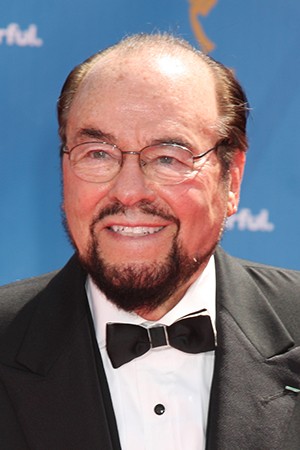
Who?
James Lipton, host of Inside the Actor's Studio
How?
Bladder cancer.
His Story:
You might be an actor, but you never really made it until James Lipton made you look inward during one of his intimate hour-long chats on Inside the Actor's Studio. The Bravo network series was his brainchild, and it was unique in that, unlike a lot of other entertainment business shows, it opted to focus solely on the craft of acting. What made actors tick? What led them to make that bold dramatic choice instead of something more boilerplate? When will John Lithgow be recognized as the genius that he is?
James Lipton was quite the wordsmith. He got his start writing for Broadway and for television shows in the '60s before becoming a woman's pimp in Paris (yup). It wasn't until the '90s when he began broaching the idea of letting the general public in on the intimate methods of acting and creating Inside the Actors Studio. While he didn't have any interviewing history, his inside knowledge of the subject made him ask questions that viewers found compelling. The concept took hold deeply, and as all famous pimps say, actin' ain't easy.
March 29 - Co-Writer of a Rock Anthem
Who?
Alan Merrill, musician.
How?
Complications from COVID-19.
His Story:
How many timeless rock hits have you knocked out today? Chances are you're like most people and are seated firmly in the "zero" section. Alan Merrill was a lifer of a musician. His band the Arrows released a slew of singles in the mid-1970s, one of them being a song that Joan Jett and the Blackhearts would make into a gargantuan hit in 1982.
"I Love Rock 'N' Roll" is at its very heart a perfect hit rock song. It's concise, has a chorus that's custom-fitted to be screamed by everyone at the local bar, and it doesn't feel dated. Alan Merrill co-wrote that song in 1975 with the Arrows, and while it didn't have the reaction that Joan Jett received with her version, it nonetheless had all of the pieces already in order. Merrill never stopped making music, working with countless other artists and recording and touring as recently as March of 2020, when he contracted the virus that sucked the entire soul out of the year. Rock 'n' roll will still be fine, however. Thanks, Alan.
April 1 - Another Rocker, Another COVID Death
Who?
Adam Schlesinger, musician, and Fountains of Wayne co-founder.
How?
His Story:
Being an original member of Fountains of Wayne is a pretty badass start to anyone's story, but Adam Schlesinger did a lot more than help to write the band's huge hit "Stacy's Mom." Let's start with soundtrack work: did you know that he wrote the title song for the Tom Hanks hit 1996 film "That Thing You Do!"? Not too shabby, right? That's a true earworm, earning him Oscar and Golden Globe nominations (he lost to some jerkoff named Andrew Lloyd Webber). Moving on to Broadway, Schlesinger received Tony Award nods for musical adaptations of the John Waters film Cry-Baby.
On the Emmy front, he earned tons of nominations for everything from Sesame Street to a Christmas special put on by Stephen Colbert and actually won one for his work as a songwriter on the TV show Crazy Ex-Girlfriend. And to round out the whole EGOT (Emmy, Grammy, Oscar, Tony) nominee profile, he got himself a Grammy for that Stephen Colbert Christmas album. Just like the man before him on this list, COVID took his life at the age of 52. Schlesinger did it all, and there's a lot less wonderfully, genuinely goofy art in the world because he's gone from it now.
April 8 - A Major Figure in the Clinton Impeachment Scandal

Who?
Linda Tripp, former government employee.
How?
Pancreatic cancer.
Her Story:
Donald Trump, of course, isn't the first president to have been impeached. You only have to go back to the mid-'90s to find that Bill Clinton was indeed handed a nice bag of articles of impeachment. This was due to his numerous affair allegations, especially with Monica Lewinsky, and Linda Tripp's relationship with Lewinsky was a big part of the scandals, as she provided much of the information to prosecutors.
Linda Tripp worked for the government and secretly taped talks that she had with Lewinsky, specifically the juicy parts where she talked about her affair with Clinton. Tripp knew she had a bombshell and offered the information to get a book deal. Of course, she did tape Lewinsky without her consent, so to remain immune to prosecution of her own, she sent them to star prosecutor Ken Starr, who already had Clinton in his judicial sights. The recordings are of special note because Tripp gave Lewinsky all sorts of insight on how to catch Slick Willy Clinton with his pants down and even told her to save that infamous blue dress that was coated with the president's, uh, DNA.
April 9 - A MAD Artist
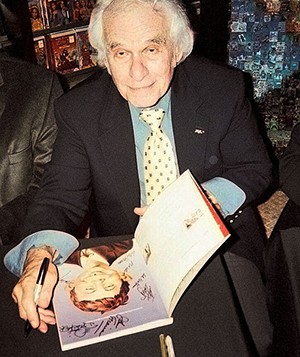
Who?
Mort Drucker, cartoonist.
How?
Undisclosed.
His Story:
It takes a special kind of lunatic to be able to create instantly-recognizable caricatures and cartoons of famous people, but Mort Drucker was exactly that. So it's not surprising he got his artistic start at the company that would eventually become DC Comics. But it wasn't until 1956 that he took the job that everyone the world over would know him for.
MAD Magazine (perhaps you heard of them) took him on the staff, and it wasn't long before he was known for satirizing celebrities and politicians with his keen eye for detail and summing a person up with their distinct features. Indeed, he would write and cartoon for the magazine for five more decades. He parodied things so well for the magazine that the very people he was making fun of, like George Lucas himself, gave him the highest praise for his work. Lucas, funny enough, had Drucker design the movie poster for one of his first films, American Graffiti. MAD was a ragtag staff of cultural misfits, lovingly known in their credits as the "usual gang of idiots", and Mort Drucker was the most lovingly idiotic of them all.
April 18 - A Man Who Would Revolutionize Healthcare

Who?
Takuo Aoyagi, engineer.
How?
Undisclosed.
His Story:
One crucial part of the treatment and diagnosis of coronavirus is knowing how well (or how terribly) someone's blood is carrying oxygen. As you know, it's kind of important that your organs receive that oxygen-rich blood so they can, you know, keep you alive. A low pulse oxygen level is one of the key ways that doctors can identify coronavirus in a patient.
Takuo Aoyagi was an engineer who worked at a Tokyo company that produced electronic medical equipment. In 1972, he was tinkering with a device that measured output from the heart and found that a "defect" in it was actually a really good indicator of how much oxygen was in a patient's blood. Three years later, he had an invention to show the world, called the pulse oximeter. You might know it as that little clamp they put on your finger at the doctor's office when taking your vital signs. It works by shooting light from one side of the "teeth" to the other, and if yours is above the mid-90s, you probably don't have a lot to worry about. But if you're lower, doctors can usually tell through the minimally-invasive pulse oximeter that there are bigger problems afoot. Aoyagi earned his official patent in 1979, and his little device that tells so much is on index fingers the world over now.
April 21 - An Electronic Music Pioneer
Who?
Florian Schneider, co-founder of German band Kraftwerk.
How?
Cancer.
His Story:
Leave it to Germany to create something weird and amusingly sinister right after the world was soaking in good musical vibes after the Summer of Love in 1967. That's when the band Kraftwerk emerged from the country, ready to weird everyone out. Florian Schneider and his friend Ralf Hutter formed the band in 1968, and the two would remain the primary heart of the band, leading the charge in electronic music-making and inspiring artists as diverse as Coldplay and Dr. Dre.
Schneider, whose father designed the Bonn Airport in Germany, helped Kraftwerk (which translates to "power plant", put out a string of albums in the 1970s that twisted traditional music into repetitive and entrancing loops filled out with synthesizers and robotic lyrics. Imagine Daft Punk, but less into Power Rangers.
Florian and his little group of maniacs often found themselves being sampled by hip-hop artists as the 1980s carried on, most famously Afrika Bambaataa on his world-crushing hit "Planet Rock." Artists like Moby, Nine Inch Nails, and LCD Soundsystem owe a great deal to those krafty Germans and their odd beeps and boops.
Top image: 20th Century Studios, NASA, Ovation